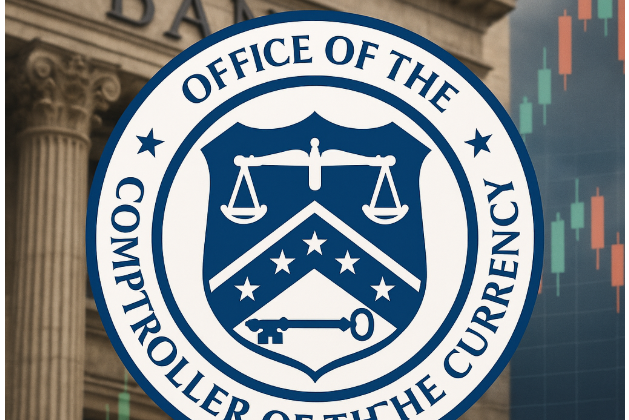
The global economy thrives on the exchange of goods, services, and currencies across borders. At the heart of these transactions lies the concept of base currency, a crucial element in the foreign exchange (Forex) market. The base currency is more than just a unit of trade; it serves as a foundation for pricing, trading, and evaluating other currencies. Understanding the dynamics of the base currency helps investors, traders, and businesses make informed decisions in the complex world of finance.
What is the Base Currency?
The base currency is the first currency listed in a currency pair and serves as the benchmark against which the value of the second currency (the quote currency) is measured. For example, in the EUR/USD currency pair, the Euro (EUR) is the base currency, and the US dollar (USD) is the quote currency. This means the quoted price reflects how much of the quote currency (USD) is needed to purchase one unit of the base currency (EUR).
Key Features of Base Currency:
- Reference Point: The base currency acts as a reference for traders when they are buying or selling currency pairs.
- Standardization: It provides a standardized unit for quoting and comparing currency values in the Forex market.
- Primary Currency: The base currency is the primary currency in transactions, with the quote currency being secondary.

The Role of Base Currency in Foreign Exchange Markets
In the foreign exchange market, the base currency plays a pivotal role by serving as the main unit against which other currencies are traded. This creates a standard method for quoting exchange rates, making it easier for traders to understand and participate in the global currency market. The choice of a base currency often depends on factors such as the stability of the currency, its acceptance in international trade, and its overall economic influence.
Benefits of Using a Base Currency:
- Simplification: It simplifies the process of trading by providing a consistent measure across different currency pairs.
- Benchmarking: The base currency serves as a benchmark, facilitating easier comparison of the relative value of different currencies.
- Risk Management: Traders can use the base currency to hedge against potential risks in the Forex market.

Types of Base Currency
Different currencies are used as base currencies in various regions and markets, depending on their economic significance and global acceptance. Below are some of the most common base currencies used in the foreign exchange market:
a. US Dollar (USD)
The US dollar is the most widely used base currency globally, primarily due to the United States’ economic dominance and the dollar’s role in international trade and finance. The USD is often used as the base currency in major currency pairs like USD/JPY, USD/EUR, and USD/GBP.
b. Euro (EUR)
The Euro is the second most used base currency, especially within the European Union and its trading partners. It is the official currency of the Eurozone, comprising 19 of the 27 European Union member states.
c. British Pound (GBP)
The British Pound, commonly referred to as “Sterling,” is another significant base currency. It is the currency of the United Kingdom and its associated territories. The GBP is often used as the base currency in pairs like GBP/USD and GBP/EUR.
d. Japanese Yen (JPY)
The Japanese Yen is a major base currency in the Asian markets. It plays a critical role in the foreign exchange markets, particularly in currency pairs involving Asian and Pacific currencies.
e. Other Common Base Currencies
Other currencies like the Canadian Dollar (CAD), Australian Dollar (AUD), and Swiss Franc (CHF) are also frequently used as base currencies in their respective regions. These currencies are often chosen based on the stability and economic strength of the issuing country.

How Base Currency Facilitates International Trade
Base currencies simplify international trade by providing a common currency for pricing goods and services. When two countries engage in trade, using a base currency helps to establish a uniform pricing mechanism, reducing the complexity of converting between multiple currencies. This, in turn, facilitates smoother and more predictable trade flows between nations.
Role in Trade Agreements:
- Consistency: By using a base currency, countries can maintain consistent pricing, reducing the risk of price fluctuations due to currency conversion.
- Efficiency: It streamlines the settlement process, making international trade faster and more efficient.

Base Currency vs. Quote Currency
In a currency pair, the base currency is always the first currency listed, while the second currency is known as the quote currency. The value of the quote currency is expressed relative to one unit of the base currency. For instance, if the EUR/USD exchange rate is 1.20, it means that 1 Euro (EUR) is equivalent to 1.20 US dollars (USD).
Differences Between Base and Quote Currency:
- Order: The base currency is listed first in a currency pair, followed by the quote currency.
- Value Expression: The value of the quote currency is expressed in terms of the base currency.
- Transaction Basis: When buying a currency pair, the trader buys the base currency and sells the quote currency.
Base Currency vs. Reserve Currency
While the terms “base currency” and “reserve currency” are sometimes used interchangeably, they refer to different concepts in the financial world.
Base Currency:
- Usage: Primarily used in trading and quoting exchange rates in the Forex market.
- Function: Acts as a reference for currency transactions and price determination.
Reserve Currency:
- Usage: Held by central banks and governments as part of their foreign exchange reserves.
- Function: Provides a stable asset for international payments and as a store of value.
Although some currencies, like the US dollar and Euro, can function as both base and reserve currencies, their roles in the global economy differ. The base currency is more focused on facilitating trade and pricing, while the reserve currency is vital for maintaining economic stability and fulfilling international obligations.

Factors Influencing the Choice of Base Currency
Several factors influence the selection of a base currency in international trade and finance:
Economic Stability:
Currencies from economically stable and influential countries are more likely to be chosen as base currencies. For example, the US dollar is preferred due to the economic strength and global influence of the United States.
Global Acceptance:
A currency’s global acceptance and liquidity also play a significant role. The more widely a currency is accepted in international markets, the more likely it is to be used as a base currency.
Historical and Regional Significance:
In some cases, historical ties or regional influence can determine the choice of base currency. For instance, the British Pound is often used in former British colonies due to historical connections.

The Importance of Base Currency in Global Finance
Base currencies are critical in global finance because they provide a stable and consistent reference point for pricing, trading, and comparing the value of different currencies. This stability is essential for international trade, investment, and financial markets, where accurate and reliable exchange rates are crucial for decision-making.
Impact on Global Markets:
- Stability: Base currencies help maintain stability in global markets by providing a consistent measure for currency valuation.
- Trust: They foster trust among traders and investors, knowing that they can rely on the base currency for accurate pricing.

How Central Banks Utilize Base Currencies
Central banks use base currencies as part of their monetary policy and foreign exchange operations. By holding base currencies as part of their reserves, central banks can stabilize their own currencies, manage inflation, and influence exchange rates.
Role in Monetary Policy:
- Intervention: Central banks may intervene in the Forex market using base currencies to control inflation and stabilize their currency.
- Reserves: Base currencies are often held as part of a country’s foreign exchange reserves to support international trade and payments.
The Future of Base Currencies in a Digital World
As the world moves towards digitalization, the concept of base currency is also evolving. The rise of cryptocurrencies and digital currencies issued by central banks (CBDCs) could redefine what constitutes a base currency in the future.
Potential Changes:
- Digital Base Currencies: Digital currencies like Bitcoin or central bank-issued digital currencies (CBDCs) could emerge as new forms of base currency.
- Global Acceptance: The global acceptance of digital currencies could challenge traditional base currencies, leading to a more decentralized financial system.

Practical Examples of Base Currency in Action
To better understand how base currency operates, let’s look at some practical examples:
Example 1: EUR/USD Trading
A trader buys the EUR/USD currency pair at an exchange rate of 1.20. This means the trader purchases 1 Euro (EUR) by paying 1.20 US dollars (USD). Here, the Euro is the base currency, and the US dollar is the quote currency.
Example 2: International Trade
A company in Japan imports goods from the United States. The transaction is conducted in USD/JPY, where the USD is the base currency. The exchange rate determines how many Japanese Yen the company needs to pay for one US dollar.

Frequently Asked Questions (FAQs)
What is the significance of a base currency in Forex trading?
The base currency is significant in Forex trading because it provides a standard measure for pricing and trading currencies. It simplifies the trading process by offering a consistent reference point for evaluating the value of different currencies.
How does the base currency differ from the quote currency?
The base currency is the first currency listed in a currency pair and serves as the reference point for pricing. The quote currency is the second currency listed, representing how much of it is needed to buy one unit of the base currency.
Can a currency be both a base currency and a reserve currency?
Yes, some currencies, like the US dollar, can serve as both a base currency in Forex trading and a reserve currency held by central banks for international payments and financial stability.
Why is the US dollar the most common base currency?
The US dollar is the most common base currency due to the United States’ economic strength, global influence, and the dollar’s widespread acceptance in international trade and finance.
How do central banks use base currencies?
Central banks use base currencies to stabilize their own currencies, manage inflation, and influence exchange rates. They may hold base currencies as part of their foreign exchange reserves.
What role will digital currencies play in the future of base currencies?
Digital currencies could play a significant role in the future of base currencies by offering new forms of decentralized and globally accepted currencies, potentially challenging traditional base currencies like the US dollar and Euro.








